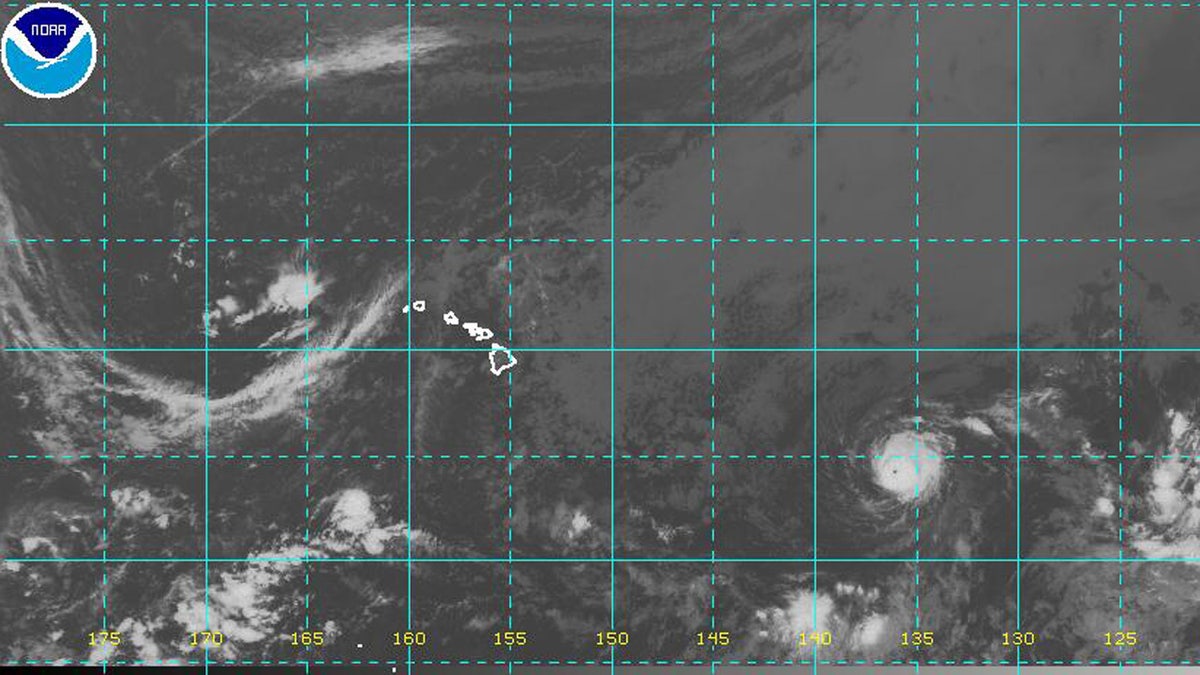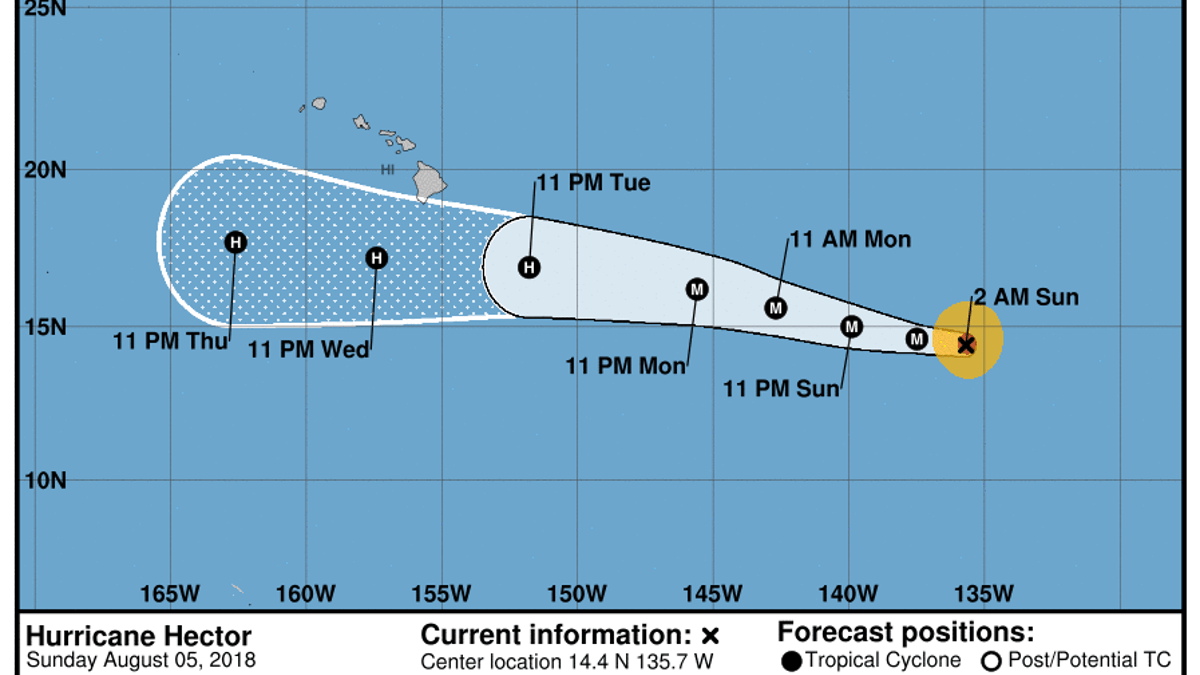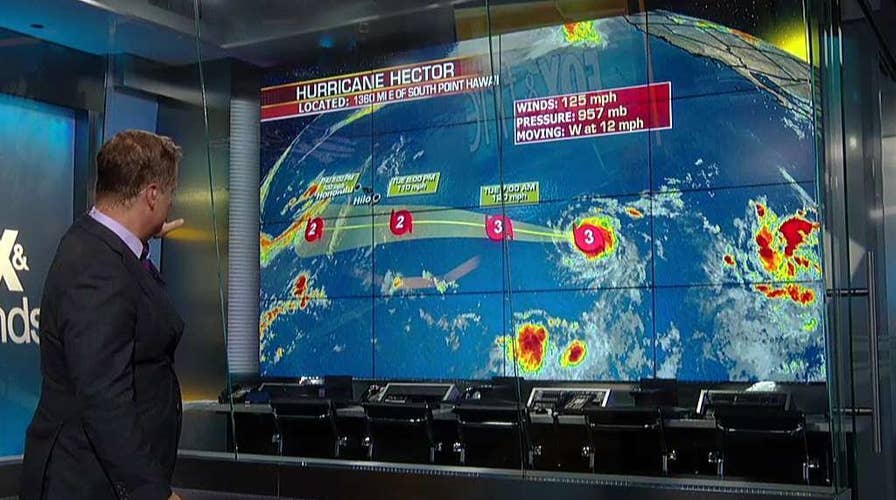Hurricane Hector roared through the Central Pacific on Sunday and is expected to pass near the Big Island of Hawaii, where a volcano continues to send lava into the sea.
The National Hurricane Center said in its 5 a.m. ET advisory that Hurricane Hector is a "strong" category 3 storm with sustained winds of 125 mph and is moving west at 12 mph. The storm is located about 1,360 miles east of South Point, Hawaii, located on the Big Island.
"Interests in the Hawaiian Islands should monitor the progress of Hector," the NHC said.
Hector is expected to continue moving west and have a slight increase in speed over the next couple of days.

Hurricane Hector is located about 1,360 miles from South Point, located on the Big Island of Hawaii. (NOAA)
"Slow weakening is forecast during the next few days. However, Hector is expected to still be a major hurricane when it moves into the central Pacific basin," according to the NHC.
Hurricane-force winds expected up to 30 miles from the center of the storm, while tropical storm-force winds reach up to 105 miles from the center. Forecast models have Hector passing to the south of the Hawaiian islands between Wednesday and Thursday, according to KHON.
HOW AFRICAN DUST IS SUBDUING US HURRICANES
While there are no coastal watches or warnings in effect, the NHC said that people on the Hawaiian islands should keep an eye on the storm. On Friday, state officials warned residents and visitors to take precautions in case Hector gets closer to the island chain.

The forecast track for Hurricane Hector. (NOAA)
“Hector is our first hurricane this year. We want to remind the public we are in the middle of the hurricane season and we urge people to take the weekend to prepare their homes and families for impacts that could be felt statewide,” Tom Travis, the state's administrator of emergency management, said in a statement.
Officials urge that residents prepare an action plan if they need to shelter in place or evacuate their homes, and have an emergency kit with a minimum of 14 days of food, water and other supplies.
ROAD DAMAGE FROM EARTHQUAKES IS LATEST HAWAII VOLCANO PERIL
The hurricane's potential close pass of the Big Island comes as the state is still dealing with the ongoing issues from the eruption of the Kilauea volcano, which has been spewing lava since May 3. The United States Geological Survey said Saturday that the volcano is still sending large amounts of lava into the sea.
An estimated 700 homes have been destroyed by the volcano, more than 500 of those in just two days, and thousands of people have been displaced. One man was injured in the weeks after the eruption began, and another 23 people were hurt July 16 when lava entering the ocean exploded onto a tour boat.
The Associated Press contributed to this report.


